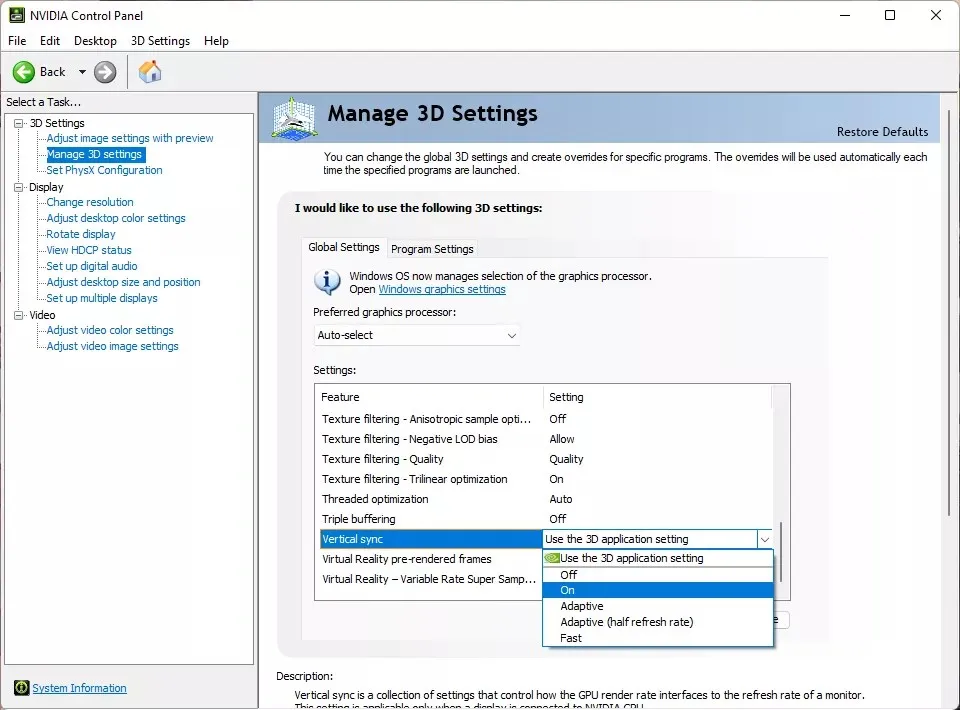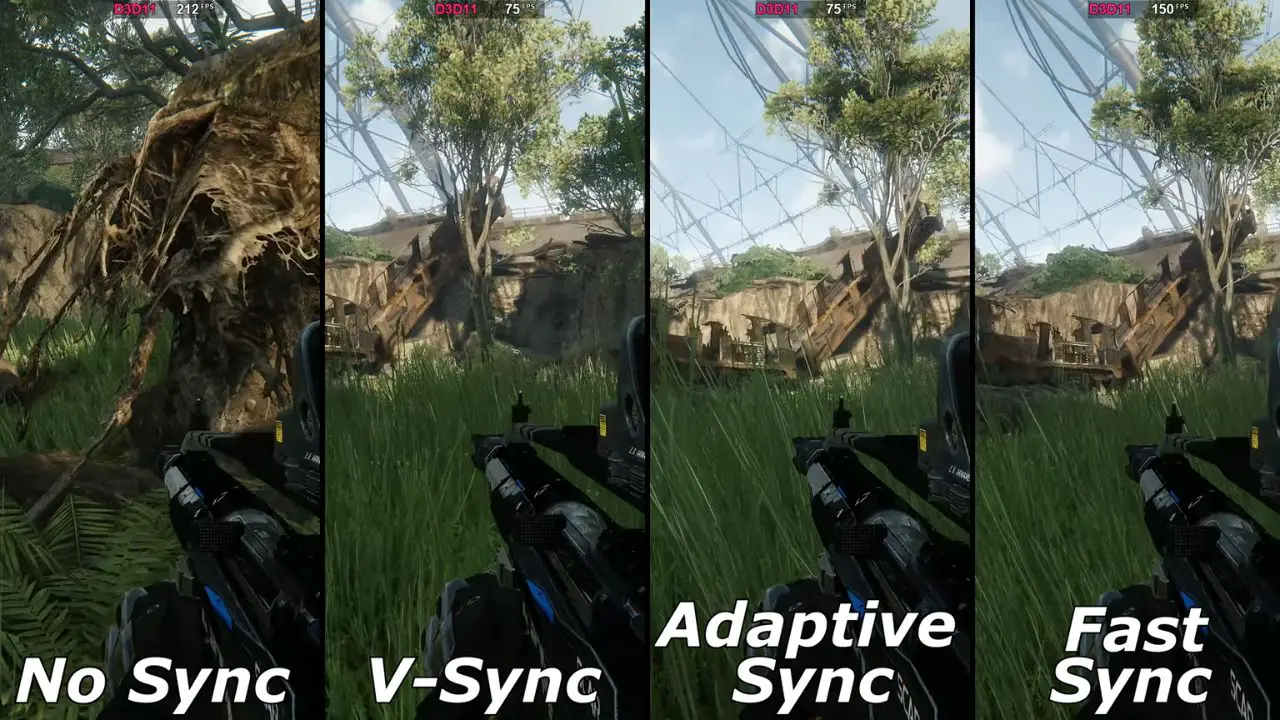Yes, VSync (Vertical Synchronization) can lower FPS (frames per second), but in specific situations. Basically, this technology is being used to synchronize the refresh rate and the game rate. So, when you turn on VSync, it waits until the monitor displays one frame, and then the next one is followed. You may notice a slight delay which actually reduces the FPS.
However, in other situations, enabling VSync can also affect visual artifacts. So, based on the requirement and your system, you need to decide whether you should turn it on or turn it off.
Let’s walk you through more detailed information on VSync to help you make a decision.
What is VSync?
VSync, also known as Vertical Synchronization, is a technology that synchronizes the refresh rate and the frame rate of the monitor. It was developed by GPU manufacturers to resolve the problem related to screen tearing.
If the GPU is trying to display multiple frames at the same time, then screen tearing can occur. Thus, you can see horizontal lines are splitting the display. This occurs if the frame rate and the refresh rate do not sync together.
Other than this, if you are playing high-speed games that have a constant changing rate, then screen tearing can occur. This is where Vertical Synchronization can fix the problem by limiting graphics card usage. It reduces the frame per second so that the monitor can adjust with its capacity. The solution that is used by Vertical Synchronization is Page flipping and Double Buffering.
How VSync is making a difference while playing games?
If you are playing any game, then VSync reduces the frame rate so that your gaming experience does not get destroyed. It tries to find the perfect balance. At the same time, it also increases the shuttering rate and input lag. Thus, most gamers choose to enable VSync when they are playing games that include shooter titles and fighting sequences.
How to enable VSync (Vertical Technology)?

Vertical Synchronization technology, or VSync, has been designed to work with every display, and you do not need to check the compatibility. All you need is a graphics card that supports the technology.
So, grab the latest generation of the graphics card, and you can also enable VSync technology in the settings of the driver. You can also find the enabling and disabling options of VSync technology in the Graphic Setting menu.
You need to check whether your graphics card supports VSync. You can do this with AMF and drivers from Nvidia. Try to navigate to the Nvidia Control Panel of the PC.
Click the Start button, and in the blank space, type “Nvidia control panel”. As you hit the Enter key, it will take you to the Nvidia control panel. Look for the option managing 3D settings. Now, under the Global Setting tab, click on VSync. You need to enable the option from the drop-down menu or check whether it is already enabled.
If you are using a similar graphics card, like Nvidia, then the Settings methods might vary slightly. So, do check the user manual for confirmation
How to disable VSync?
Again, you need to go to the Start button and type the Nvidia control panel in the search list. Hit the Enter button and try to locate the option managing 3D settings. Again, under the Global Setting tab, you will find the VSync option. Simply, disable VSync from the drop-down menu.
What is the advanced form of VSync?
You can get 3 advanced forms of VSync, and they are listed below:
- Adaptive VSync – If you notice the FPS of the game is equal to the refresh rate, then Adaptive VSync is already enabled. This comes along with an Nvidia graphics card. It improves the refresh rate of the monitor. Moreover, enabling VSync also prevents input lag.
- Fast Sync – It is an advanced version of Adaptive VSync, and it gets activated only when it is necessary. It helps to pick the best frame rate and also adds automatic triple buffering. This technology comes from the house of Nvidia.
- Enhanced Sync – It is quite similar to Fast Sync and is developed by AMD, which checks the frame rate. If the frame rate drops below the monitor’s refresh rate, then it automatically disables VSync.
Should you turn off or on VSync?
If you are playing any high-power game, then you can turn on VSync. This will prevent skin tearing and also prevent the GPU from overworking. However, if you experience input lag or there is a decrease in frame rate, then you should turn off VSync technology.







